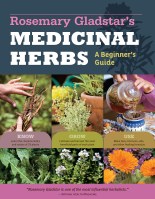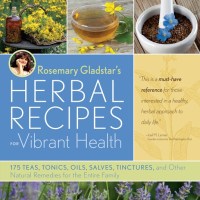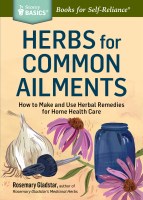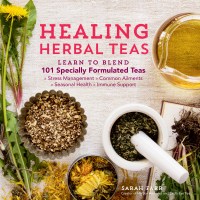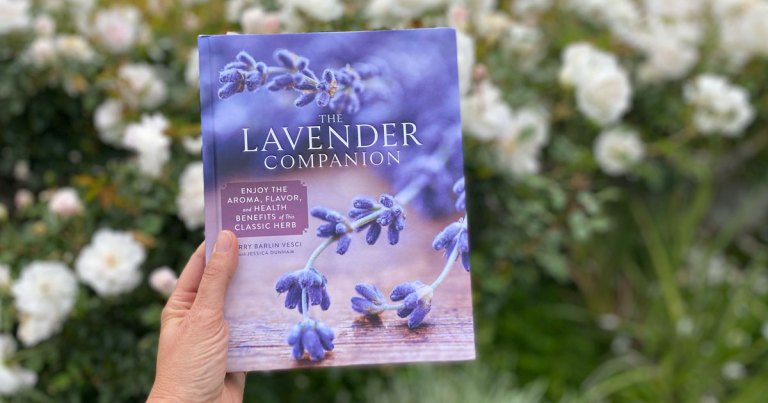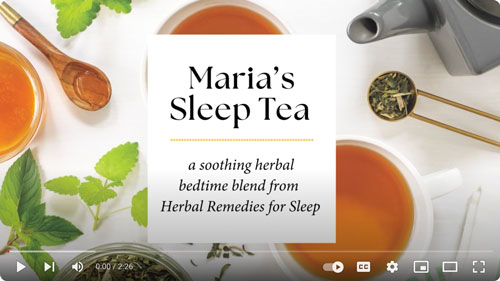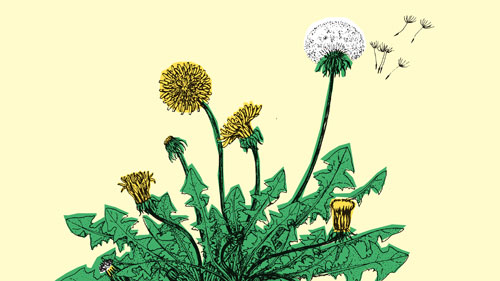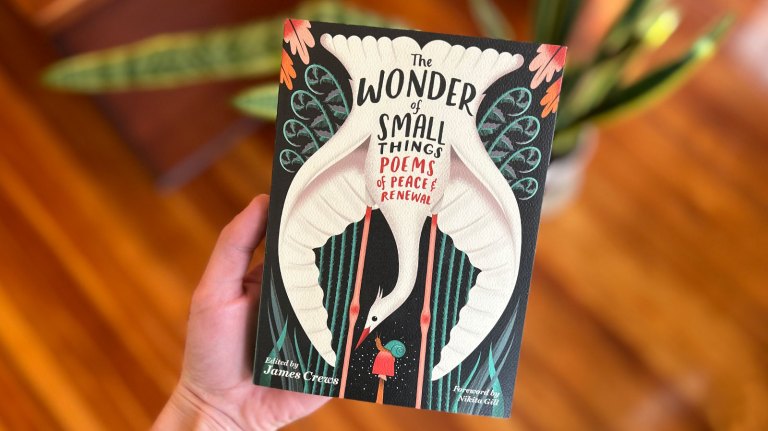Herbal Spotlight: Holy Basil (Tulsi)
In Ayurvedic medicine, holy basil (tulsi) is believed to nourish perfect health and promote long life. It also makes amazing teas, pestos, and herbal vinegars.
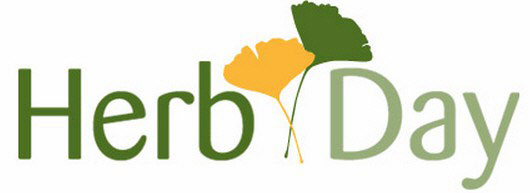
With National Herb Day happening this Saturday, May 3, and the arrival of gardening season for many here in New England, it feels like the perfect time to highlight a few herbs we love to use in the kitchen, in the garden, and for our health.
Selfishly, I’m kicking things off with a personal favorite. While I’ve been a longtime fan of the spicy-sweet flavor of sweet and Thai basils in pesto, Asian dishes, and omelets, holy basil is relatively new to me. Since learning about it in a meeting for an upcoming Storey book, I’ve been drinking it in tea form every night with a tiny bit of local honey — now a much-anticipated, soothing pre-sleep ritual.
Eager for a little more information, I was glad to find this overview of the history and health benefits of holy basil in Rosemary Gladstar’s Herbs for Long-Lasting Health, along with a recipe for Holy Basil Long-Life Vinegar, jars of which will undoubtedly line my windowsills this summer. Are you a fan of holy basil? What are your favorite ways to use it? — Emily Spiegelman, Digital Features Editor
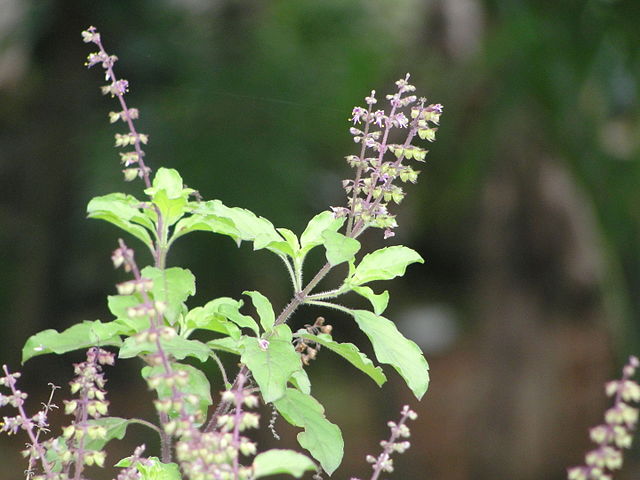
Holy basil (Ocimum sanctum)
Parts used: aerial part of the plant, including leaves and flowers
Benefits: According to Indian texts, Lakshmi, wife of the life-preserving god Vishnu, revered holy basil. Commonly referred to as tulsi, meaning “unmatched,” holy basil is considered matchless for reducing stress, increasing energy and vitality, and promoting longevity. Practitioners frequently prescribe this herb for age-related conditions, including cardiovascular problems, hypertension, and diabetes. A cousin to sweet basil, holy basil is easy to grow in your garden or on a sunny windowsill, and as an added bonus, it repels flies and other insects.
Holy basil and sweet basil share medicinal qualities and are often classified together, but they have different properties as well. Holy basil is an excellent adaptogenic tonic herb that helps restore vitality and vigor. Sweet basil may as well, but it is more specific for imbalances and illnesses. There’s no problem using one in place of the other, but as you use them you’ll discover differences. I might choose sweet basil for headaches and digestive disturbances and holy basil in my tonic and adaptogen formulas for restoring vitality and renewing energy.
Suggested uses: Holy basil is probably the most widely used and highly regarded herb in India, with more than 3,000 years of recorded medicinal use. In Ayurvedic medicine, India’s widely practiced healing system, holy basil is classified as a rasayana, an herb that nourishes a person’s growth to perfect health and promotes long life. The daily use of this herb is believed to help maintain the balance of chakras (energy centers) in the body and bring out the goodness, virtue, and joy in humans. Bring on the herb!
Preparation: Holy basil can be used either fresh or dried. It makes a delicious invigorating tea on its own or blended with peppermint and lemon balm; natural-foods stores carry several blends. As a supplement, the recommended dosage is two capsules two to three times daily, or one-half to one dropperful of tincture three times daily. Both holy basil and sweet basil make delicious herb pastes, pestos, and herbal vinegars.
Holy Basil Long-Life Vinegar
Making delicious vinegar with fresh holy basil is a great way to enjoy this “sacred herb” daily on salads and even as a tonic drink. For medicinal purposes, I usually suggest using raw unpasteurized apple cider vinegar because it is rich in nutrients, is alkalizing to the system, and helps establish healthy gut flora (the bacteria or flora that live in our digestive tract and are essential to good health).
Ingredients
- Fresh holy basil leaves
- Raw, unpasteurized apple cider vinegar
Directions
Pick fresh holy basil leaves. If necessary, wash the leaves first, but be sure to gently pat dry. Place the leaves in a clean, dry, widemouthed quart jar, filling about three-quarters of the jar. When making medicinal vinegars, you want a lot of herbal material to liquid. The stronger the vinegar, the more medicinal (and better) it is! Once your herbs are packed in the bottle, add apple cider vinegar, filling to the top of the jar. Place the herbs and vinegar in a warm sunny window or by a heat source for 3–4 weeks or until the vinegar takes on the rich, pungent taste and odor of the herb.
When the vinegar is completed, strain out the herbs and rebottle the liquid. This is when you can bottle it in fancy vinegar bottles with narrow necks, but not until after you’ve strained the herbs. Trying to get the spent herbs out of a narrow-necked bottle is very time consuming and doesn’t always work! Many people like to add a sprig or two of fresh herb to the finished product for a visual touch.
To use:
Add 2 to 3 tablespoons to your daily salad; drink a small toddy (¼ cup or less) daily; or blend in veggie drinks for a quick pick-me-up and a lively flavor.
Variations:
Try adding garlic, whole cayenne peppers, rosemary, sage, and thyme. There’s no end to the creative fun you can have in your apothecary and kitchen lab!
TEXT AND RECIPE EXCERPTED FROM HERBS FOR LONG-LASTING HEALTH © 1999 AND 2014 BY ROSEMARY GLADSTAR. ALL RIGHTS RESERVED.
Learn More
Rosemary Gladstar shows you how to enhance your well-being in middle age and beyond using herbal remedies that effectively and safely promote vitality. With in-depth profiles of 22 medicinal herbs, preparation instructions, and dosage guidelines, you’ll discover how you can use astragalus to regenerate your body’s immune system, bilberry to ease eye problems, and milk thistle to rebuild damaged liver cells. You’ll be amazed at how herbal treatments can help support your nervous system, activate your metabolism, and keep your bones and joints healthy.

